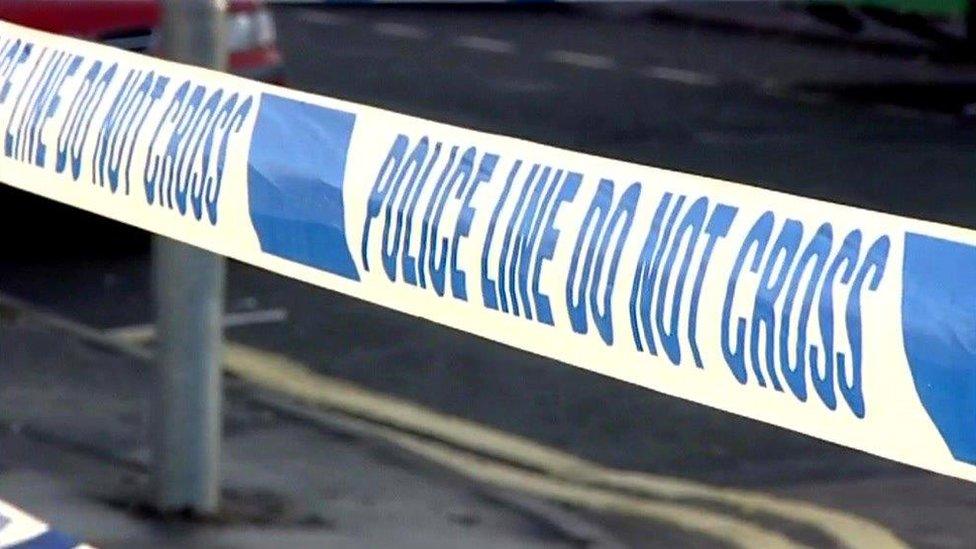Homicide rise linked to fall in police numbers, Home Office says
- Published

The fall in police numbers is "likely" to be a "contributory factor" in the rise in murder and manslaughter cases since 2014, an official study suggests.
Police numbers in England and Wales fell by 21,000 from 2010-18 - and community support officers by 6,000.
And the rate of murders and manslaughters soared by 39% in the three years to March 2018.
Evidence suggests "more police officers means fewer homicides... if all else is equal", the Home Office report says.
But the study also highlights increases in drugs- and terror-related cases as key reasons for the rise.
Clear-up rates for most crimes, notably robbery, have fallen sharply in England and Wales since 2014 and the 80-page report , externalsuggests the rise in homicides could also be due to violent incidents that escalate or offenders progressing from less serious crimes.
The report says: "There has been much speculation about the role of declining police resources in the recent rise in homicide.
"Given the lack of robust UK-based studies, this review cannot add much to that debate.
"However, if the elasticities from the robust US studies are transferrable to the UK context, then police numbers are likely to be a contributory factor, rather than the driving factor."
The government is promising to hire an extra 20,000 police officers by 2023, at a cost of £1.1bn.
There are currently 123,171 police officers in England and Wales, down from 143,000 in 2010. , external
On Thursday, Policing Minister Kit Malthouse addressed a meeting of Police and Crime Commissioners aimed at tackling serious violence, including county-lines drug dealing and homicides.
County lines is the term used to describe criminal gangs who move illegal drugs from big cities to more rural locations and sell them via dedicated mobile phone lines.
"The rise in serious violence is deeply concerning and we can only tackle it by working together and giving Police and Crime Commissioners the tools to reduce crime at a local level," he said.
Yvette Cooper, who chairs the Home Affairs Select Committee, called the findings "damning but frankly unsurprising".
"For years, Home Office ministers have insisted that there is no direct relationship between the number of police officers and levels of crime on our streets - this report indicates that there is one and that more police officers mean fewer homicides," she said.
Victims and suspects
The report also shows most homicide victims and suspects between 1997 to 2018 were white.
People born in Pakistan were the next largest group of victims, while those born in Jamaica were the next largest group of suspects.
The study also shows in 2017-18 black people were:
4.7 times more likely than white people to be victims
eight times more likely than white people to be suspects
And between 2014 and 2018 the number of black suspects rose by 41%, while the number of white suspects fell.
Most white people, however, live in wealthier neighbourhoods - compared with just 17% of black people - that have half as many homicides
"Given the strong relationship between deprivation and homicide, it seems likely that deprivation explains some of the disparity," the authors say.